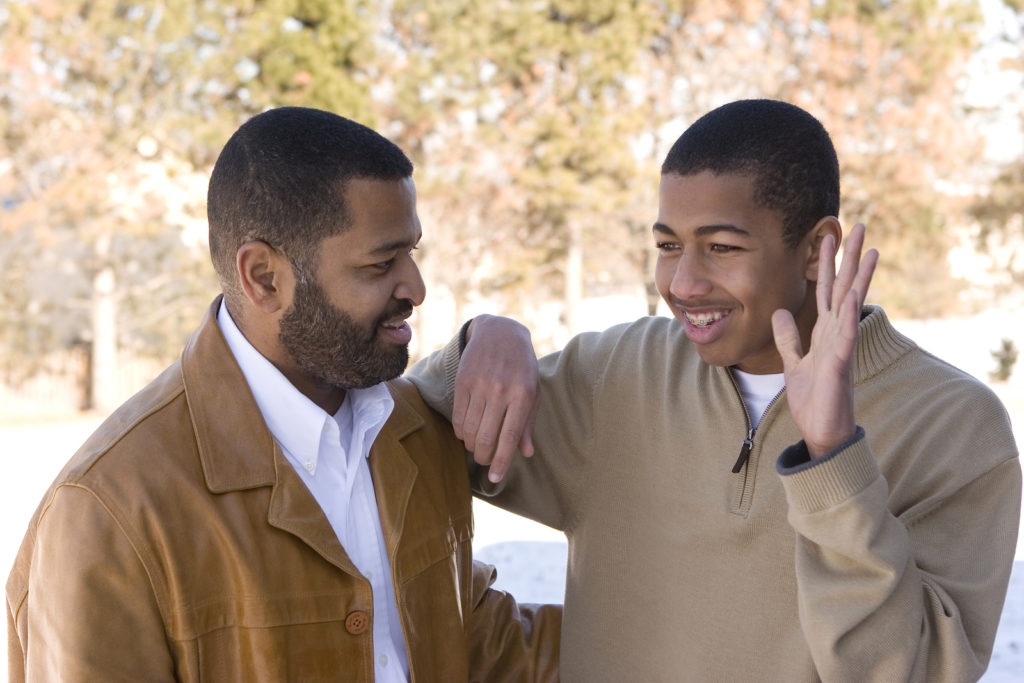
A positive attitude (or even a less negative attitude) has the potential to change lives. This came through loud and clear while reading The Roller-Coaster Years – Raising Your Child Through the Maddening Yet Magical Middle School Years (Gianetti & Sagarese). This is a fascinating book for parents of 10-15-year-olds, and for parents who want a glimpse of what’s to come.
In Chapter 4 there is a section about recognizing which discipline efforts work most effectively. The authors have this to say about the negative programming and orders we often give our kids:
“Our unconscious doesn’t pay much attention to ‘Don’t.’ So if your child is attached to the telephone for hours, edit ‘Don’t stay on that phone so long!’ to ‘Please keep your call to twenty minutes.’
“Moreover, negative programming can be destructive. If you tell your twelve-year-old son who has been sliding academically, ‘You’ll never be able to handle marine biology if you don’t bring that science grade up,’ or ‘You’ll never get into medical school the way you’re going,’ all the child really hears is ‘You’ll never.’ Inadvertently you are internalizing this message: ‘You’re not good enough, smart enough to do’ whatever. To a middler whose psychological task is to define his identity and find his strengths, this is disastrous input. Turn the warning into a positive by saying, ‘If you want to go to medical school, or become a marine biologist, you have to demonstrate you can do well in science.’ What a difference a don’t versus do approach can make!”
What a difference indeed! Accentuate the positive and you will plant the seed of what is possible. This attitude allows us to look forward, to use the positive energy that comes from anticipating something wonderful that can happen. It encourages us to focus on our strengths to propel us into the future of our choice.
So, in order to guide our children into this positive mindset, we parents have a little self-programming to do. It’s all about R & R – how we react and respond, that is.
* React by not acting impulsively. Just stop, take a breath and think. Will the words that were about to fly out of your mouth lead to more productive action? If not, it’s time to rethink and rephrase.
* Respond with words that will get your point across AND give your child a reason and motivation to care about the outcomes. Imagine how this new way of responding can turn an upsetting situation into a simple request or simple statement of fact. Bypass confrontations which drain your energy. Say what needs to be said in a way in which it can be heard. And when talking to teens, the fewer words the better! They know what you’re talking about in the first sentence or two. In fact, they often know what’s coming before you’ve even said a word!
And, as always, remember that you are your child’s most important teacher. She is watching and learning from you. You are modeling for her how to react and respond when those pesky hot buttons are pushed. So show her the ways that work, and ACCENTUATE THE POSITIVE!
Questions for Reflection:
– The “do” and “don’t” approaches… which one brings out a productive attitude in you?
– Think about a situation with your teen that ended with raised voices, or hurt silence. If you could have a ‘do-over,’ how would you rephrase to get your message out AND to leave an opening for your child to take some positive action?
– How would you feel? How do you think your teen would feel?
– Many situations lend themselves to ‘do-overs.’ Would you feel comfortable telling your child you’d like to try again and do it differently this time? If so, take this opportunity to try a new skill and show your child how it’s done!
